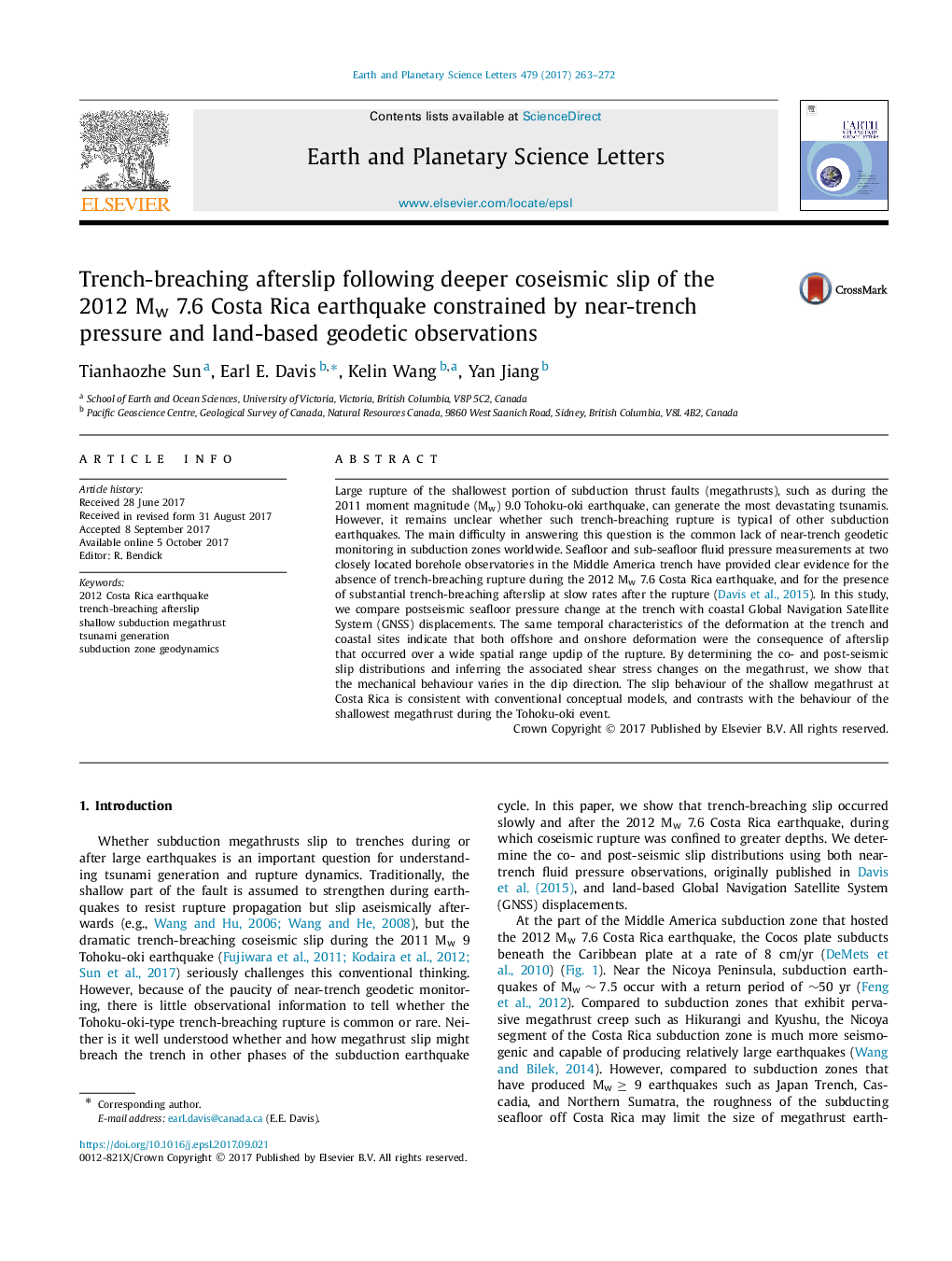| کد مقاله | کد نشریه | سال انتشار | مقاله انگلیسی | نسخه تمام متن |
|---|---|---|---|---|
| 5779603 | 1634677 | 2017 | 10 صفحه PDF | دانلود رایگان |

- Pressure records document slip to trench after the 2012 Costa Rica earthquake.
- Afterslip over a wide updip range caused both onshore and offshore deformation.
- Shallow megathrust resisted earthquake rupture but slipped slowly afterwards.
- Shallow slip at Costa Rica contrasts with the trench-breaching 2011 Tohoku-oki rupture.
Large rupture of the shallowest portion of subduction thrust faults (megathrusts), such as during the 2011 moment magnitude (Mw) 9.0 Tohoku-oki earthquake, can generate the most devastating tsunamis. However, it remains unclear whether such trench-breaching rupture is typical of other subduction earthquakes. The main difficulty in answering this question is the common lack of near-trench geodetic monitoring in subduction zones worldwide. Seafloor and sub-seafloor fluid pressure measurements at two closely located borehole observatories in the Middle America trench have provided clear evidence for the absence of trench-breaching rupture during the 2012 Mw 7.6 Costa Rica earthquake, and for the presence of substantial trench-breaching afterslip at slow rates after the rupture (Davis et al., 2015). In this study, we compare postseismic seafloor pressure change at the trench with coastal Global Navigation Satellite System (GNSS) displacements. The same temporal characteristics of the deformation at the trench and coastal sites indicate that both offshore and onshore deformation were the consequence of afterslip that occurred over a wide spatial range updip of the rupture. By determining the co- and post-seismic slip distributions and inferring the associated shear stress changes on the megathrust, we show that the mechanical behaviour varies in the dip direction. The slip behaviour of the shallow megathrust at Costa Rica is consistent with conventional conceptual models, and contrasts with the behaviour of the shallowest megathrust during the Tohoku-oki event.
Journal: Earth and Planetary Science Letters - Volume 479, 1 December 2017, Pages 263-272